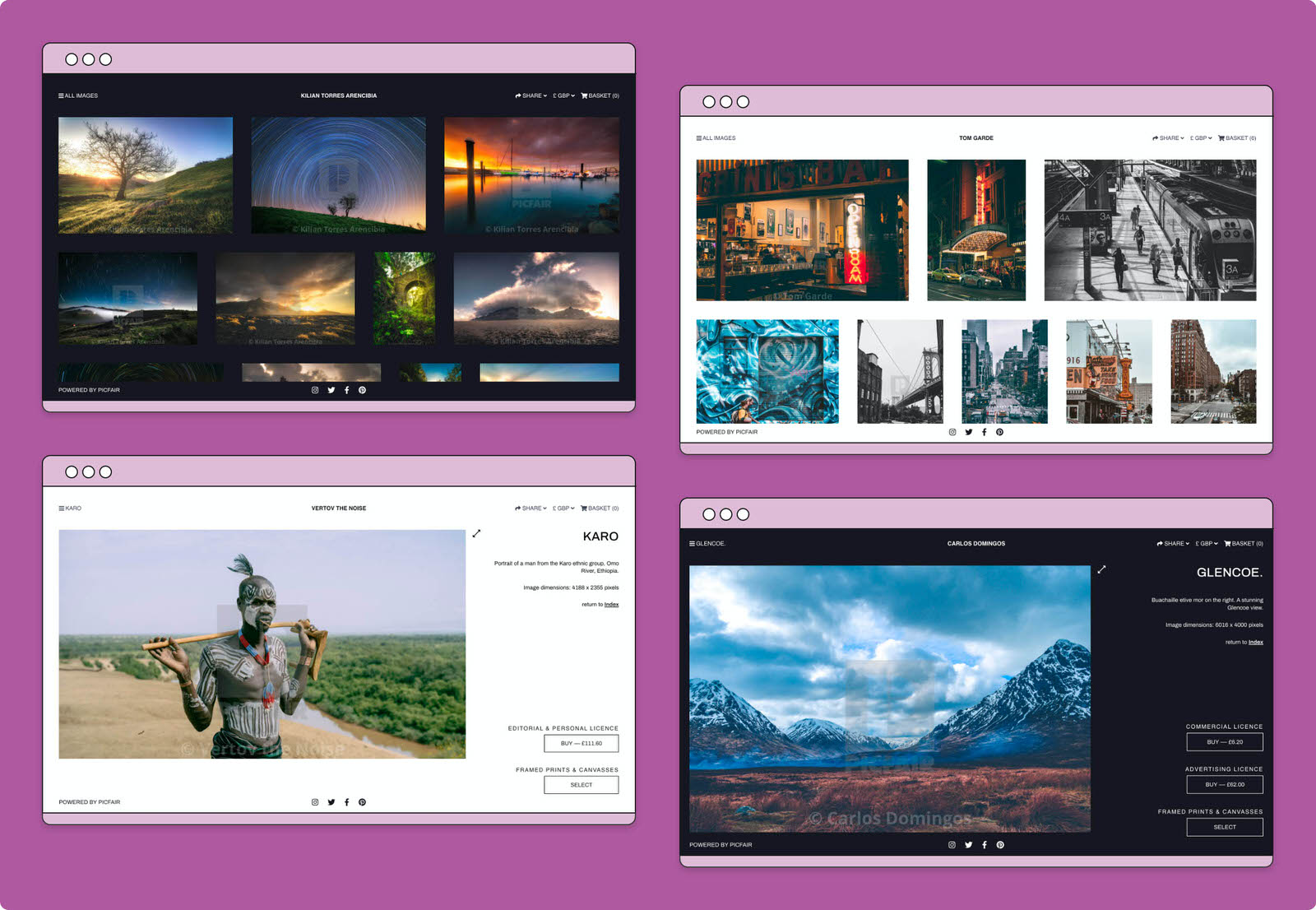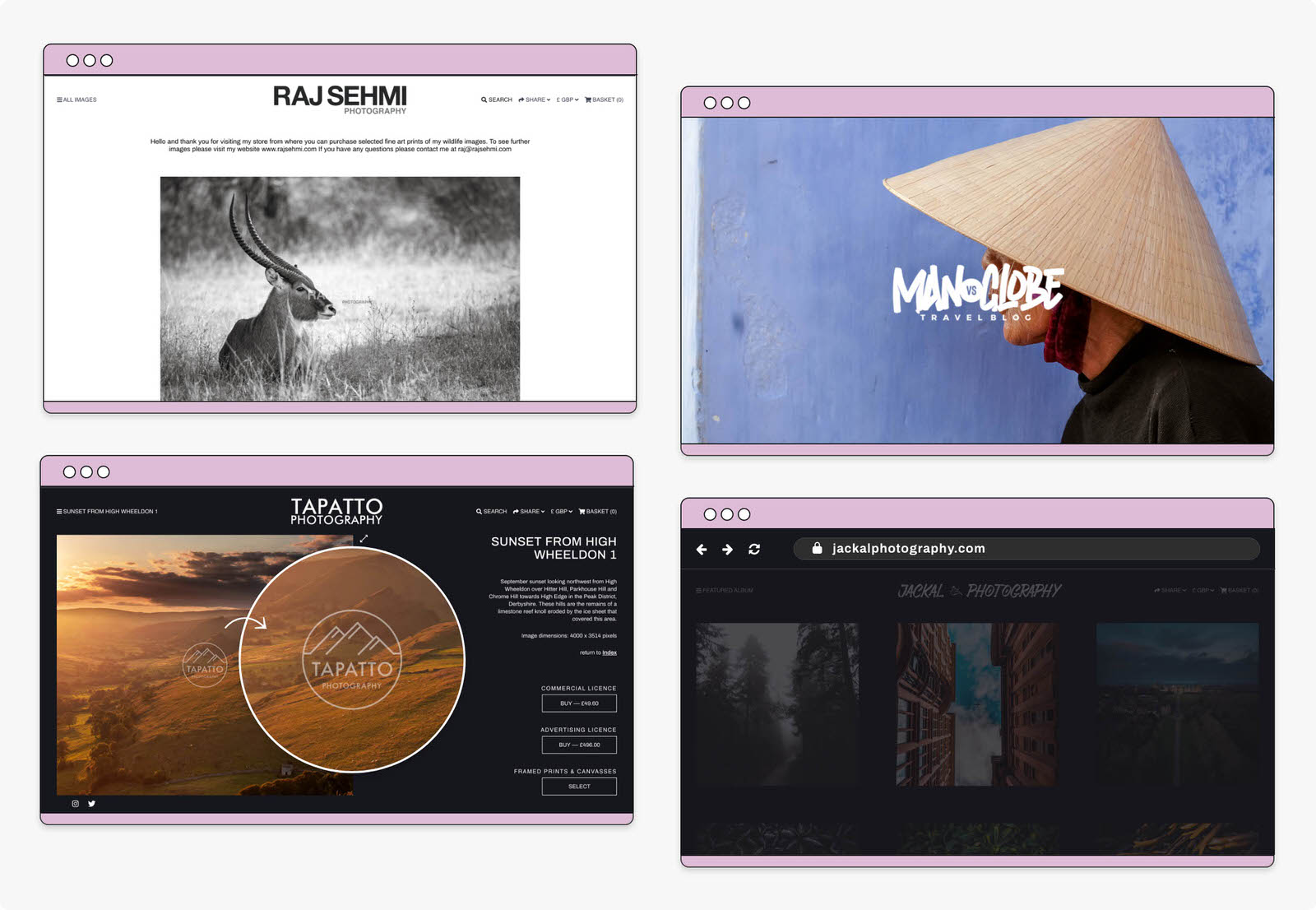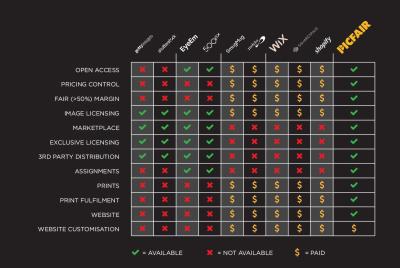Picfair is a platform that empowers photographers to sell their images easily and efficiently. It enables users to upload their photos, set their prices, and gain access to a global audience. This guide will help you understand how Picfair operates and its advantages for photographers looking to monetize their work.
What is Picfair and How Does it Work

Picfair is an online marketplace designed specifically for photographers to showcase and sell their images. The platform is user-friendly, allowing photographers of all skill levels to upload their photos quickly. Once you create an account, you can organize your portfolio, categorize your images, and set your pricing. Picfair takes care of the payment processing, making transactions straightforward for both sellers and buyers.
To begin selling, photographers simply upload their images and set their desired prices. Picfair offers guidance on pricing strategies based on market trends, helping photographers to find a competitive yet profitable price point for their work. When a customer purchases a photo, Picfair handles the delivery and payment; the photographer receives a commission on each sale, allowing them to earn passive income from their art.
Moreover, Picfair promotes its photographers actively, helping to connect them with potential buyers. This access to a broader market can lead to increased exposure and sales. The platform also offers tools for photographers to manage their portfolios and track sales performance. Overall, Picfair simplifies the photo-selling process, making it accessible and efficient.
The Benefits of Selling Photos on Picfair

Selling photos on Picfair comes with numerous advantages. First, the platform allows complete creative control, enabling photographers to maintain ownership of their work while setting their own prices. Unlike many other stock photo agencies that dictate pricing and licensing, Picfair empowers photographers to determine the value of their art.
Additionally, there are no upfront fees or subscriptions required to list images on Picfair. Photographers can start selling without worrying about initial costs. This model encourages users to explore their creativity without financial risk.
Another significant benefit is the supportive community Picfair fosters. Photographers can connect with one another, sharing tips and experiences, and benefiting from a vibe of collaboration rather than competition.
Furthermore, Picfair‘s commitment to fair pricing means photographers can keep a larger share of their earnings compared to traditional stock photo sites, which often take substantial commissions. By maximizing potential profits while providing a platform to showcase photography globally, Picfair stands out as an excellent option for photographers eager to turn their passion into profit.
Getting Started with Picfair

Starting your journey on Picfair is a breeze, and it opens up exciting avenues for selling your photography! Here’s how to kick things off:
- Sign Up: Head over to the Picfair website and create an account. You’ll need to provide some basic information, like your email address and a password. Don’t worry; it’s quick and easy!
- Create Your Profile: Once you’re registered, it’s time to set up your profile. Think of this as your online portfolio. Add a profile picture and a brief bio that highlights your photography style and interests.
- Set Your Price: Picfair empowers you to set your own prices for your photos. Consider factors like your experience, your audience, and market trends when determining a fair price point.
- Understand Licensing: Familiarize yourself with how licensing works on Picfair. They offer a range of licenses, allowing you to keep control over how your images are used.
With these initial steps completed, you’re on your way to showcasing your work to a global audience. Getting started on Picfair not only allows you to sell your photos but also connects you with a community of photographers and buyers who share your passion!
Uploading and Managing Your Photos
Now that you’ve established your Picfair account, let’s delve into the process of uploading and managing your photos. This is where your creativity truly shines!
Uploading Your Photos: Picfair makes uploading easy. Just follow these steps:
- Navigate to the ‘Upload’ section in your account dashboard.
- Click the ‘Upload Photos’ button and select your images from your device. You can upload multiple images at once, so get ready to showcase your collection!
- As your images upload, consider adding captions and keywords. This information helps potential buyers find your photos easily. Think about what terms people might use to search for images like yours.
Managing Your Photo Gallery: With your photos uploaded, management is key to keeping your portfolio fresh and appealing:
- Organize Your Gallery: Use categories or collections to group similar themes together. This makes it easier for buyers to explore your work.
- Monitor Analytics: Picfair provides insights into how your photos are performing. Keep an eye on which images get the most views or downloads to better understand your audience.
- Edit and Update: Don’t hesitate to update your listings. If a photo isn’t performing well, consider tweaking your title, description, or pricing.
By effectively uploading and managing your photos, you’ll not only cultivate a stunning portfolio but also increase your chances of sales on Picfair!
Setting Prices and Licensing Options
When it comes to selling your photos on Picfair, one of the most crucial steps is setting your prices and selecting the right licensing options. This can significantly affect your sales and how your work is perceived in the market. Here’s a breakdown of how to approach this task effectively:
- Understand Licensing Types: Picfair allows you to choose from various licensing options, including Standard, Extended, and Editorial licenses. Each option comes with its pricing structure, so it’s essential to familiarize yourself with what each license entails.
- Market Research: Take a look at similar photographs on Picfair and observe their pricing. This can give you a benchmark to determine where to set your own prices. Don’t be afraid to adjust as you get a feel for your audience!
- Consider Your Costs: Factor in your time, skills, and expenses related to photography. Price your work in such a way that fairly compensates you for your effort while remaining attractive to buyers.
- Flexible Pricing: Picfair also allows you to set your own prices, so feel free to experiment. You may want to offer promotional rates initially to draw in customers and build your reputation.
Ultimately, finding the right price and licensing formats is about balancing your artistic value with market demands. Continuously analyzing your sales will help you find the best price point strategy over time!
Marketing Your Photos on Picfair
Once you’ve uploaded your stunning images to Picfair, the next step is marketing your photos effectively. A great photo alone won’t guarantee sales; you need to actively promote your work! Here are some strategies to get you started:
- Optimize Your Profile: Ensure your Picfair profile is complete and professional. Use a clear, engaging bio and a recognizable profile picture, as this helps build trust with potential buyers.
- Use Keywords Wisely: When tagging your photos, think about the keywords that your potential buyers are searching for. Use specific terms related to the subject matter, location, or style of your photos to increase visibility.
- Social Media Promotion: Leverage platforms such as Instagram, Facebook, or Twitter to showcase your work. Share links to your Picfair storefront and engage with your followers by posting behind-the-scenes content or photography tips.
- Email Marketing: If you have an email list, don’t hesitate to share your latest releases with your subscribers. Consider sending out a monthly newsletter featuring your best new images, promotions, or photography insights.
Remember, consistency is key in marketing. Regularly engaging with your audience and showcasing your photos can turn casual viewers into loyal customers. The more you promote your work, the more opportunities you’ll have to make sales!
Understanding the Payment Process
When you’re selling photos on Picfair, knowing how the payment process works is crucial for managing your earnings effectively. Picfair has made it relatively straightforward, allowing you to focus on creating and promoting your work rather than stressing over the details of transactions.
Here’s a breakdown of how payments work:
- Transaction Fees: Picfair takes a small percentage from each sale. This fee covers the costs of running the platform and ensures you get support when needed.
- Settling Funds: Once you make a sale, the funds are processed. Usually, you’ll see your earnings reflected in your account within a few days.
- Payout Thresholds: Picfair has a minimum payout threshold that you need to reach before you can withdraw your earnings. Be sure to check what this limit is and plan accordingly.
- Payment Methods: Picfair offers several payment methods including PayPal and bank transfers. Choose the one that best suits your needs.
- Payment Schedule: Unlike some platforms that pay out monthly, Picfair allows for flexible payouts based on your preferences, which can be really handy when you need instant access to your earnings.
Understanding these aspects helps you better manage your finances and optimize your selling strategy. Remember, clear communication with your buyers can also lead to more successful transactions and recurring sales!
Tips for Success on Picfair
Selling photos online can be competitive, but with the right strategies, you can stand out on Picfair. Here are some tips for success to help you maximize your sales and grow your portfolio:
- Optimize Your Keywords: Use relevant keywords in your photo descriptions. Think about what potential buyers might search for and incorporate those terms naturally.
- High-Quality Images: Always upload high-resolution images. Quality matters in photography, and potential buyers are more likely to purchase stunning visuals.
- Market Your Work: Don’t just rely on Picfair to bring traffic. Use your social media platforms, blogs, or even email newsletters to showcase your best work and direct people to your Picfair profile.
- Stay Active: Regularly update your portfolio with new images and engage with the Picfair community. This will not only keep your profile fresh but also attract more visitors.
- Use Picfair’s Features: Take advantage of features like custom pricing or offering licenses that suit different buyers’ needs. This flexibility can increase your chances of closing a sale.
Remember, success doesn’t happen overnight. Persistence, creativity, and engagement are key. Keep learning from your experiences, analyzing what sells well, and adapting your strategies accordingly!
Common Challenges and How to Overcome Them
Entering the world of photo selling can be exhilarating, but it comes with its own set of challenges. If you’re using Picfair, understanding these common hurdles and how to navigate them can make your experience much smoother. Here are some of the most frequent challenges and tips on overcoming them:
- Pricing Your Photos: Setting the right price can be tricky. If you’re unsure, research similar images on Picfair. Use tools like Picfair’s price suggestion feature to gauge what buyers are willing to pay.
- Building a Portfolio: It’s essential to have a diverse and appealing portfolio. Start by uploading your best work and focus on a niche that differentiates you from others. Quality over quantity is key! Consider engaging in themed shoots to expand your offerings.
- Marketing Your Work: Simply uploading your photos isn’t enough. Promote your Picfair profile on social media platforms, art communities, or photography blogs. Networking with other photographers can also help gain visibility.
- Dealing with Rejections: Not every photo will sell, and that’s okay! Learn from any feedback you receive and refine your skills. Remember, even the best photographers face rejection.
- Understanding Licensing: Picfair has specific licensing rules that might be perplexing. Take the time to read through Picfair’s licensing guidelines so you can choose the best options for your images.
By addressing these challenges head-on and utilizing the resources available on Picfair, you can enhance your experience and increase your chances of success in the digital marketplace.
Conclusion and Final Thoughts on Picfair
As we wrap up our exploration of the photo selling process on Picfair, it’s essential to recognize the platform’s unique advantages. Picfair isn’t just a marketplace; it’s a community tailored for photographers looking to showcase their work and connect with potential buyers.
Here are a few key takeaways to keep in mind:
- User-Friendly Interface: Picfair’s easy-to-navigate platform makes it accessible for photographers of all skill levels.
- Fair Pricing Model: The ability to set your prices means you have control over your earnings, which is not the case with many other platforms.
- Global Reach: Selling your work on Picfair opens doors to a worldwide audience, increasing your chances of making sales.
- Support for Photographers: Picfair provides resources and support to help you improve, from marketing tips to insights about what sells well.
Ultimately, the photo selling journey on Picfair requires patience, creativity, and a willingness to adapt. By continuously refining your work and staying engaged with the community, you’ll not only enhance your skills but also increase your chances of success. Remember, every photographer’s journey is unique, so embrace yours and have fun along the way!


